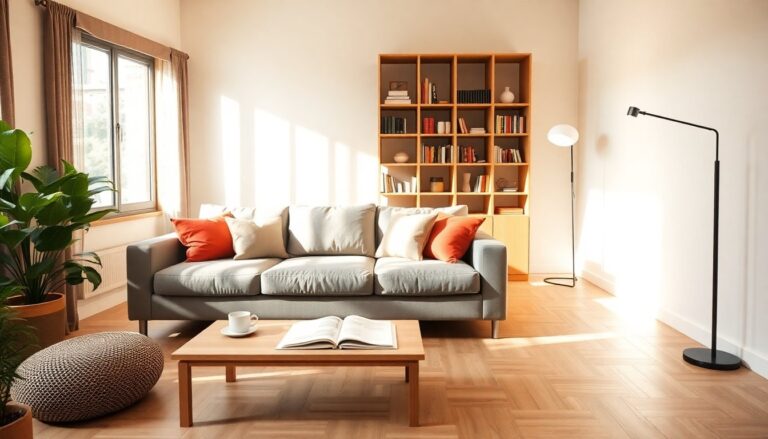Argomenti trattati
Furnishing your home involves more than merely filling it with furniture; it is about creating a space that reflects your personality while meeting your functional needs. Whether moving into a new place or refreshing your current space, understanding the basics of effective furnishing can significantly impact your environment. This article provides essential tips and insights to help you furnish your home attractively.
Understanding your space
Before exploring furnishings, it is vital to assess your space. Examine the dimensions of your rooms and consider the natural light available. Contemplate the layout and how you wish to utilize the area. For example, in a small studio apartment, multifunctional furniture can maximize usability without sacrificing style. Conversely, a larger living area may benefit from distinct zones for lounging, working, and dining.
Measuring and planning
Start by measuring your room dimensions accurately and creating a floor plan. This step is crucial for visualizing how various furniture pieces will fit and ensuring smooth movement throughout the space. When selecting your furniture, consider scale and proportion. Oversized furniture can dominate smaller rooms, while petite pieces may appear insignificant in larger areas. Strive for a balanced look that enhances the overall aesthetic of your space.
Choosing the right furniture
With a clear understanding of your space, the next step is to choose the right furniture. This is where style intersects with function. Select furniture pieces that not only align with your design preferences but also fulfill your practical needs. For instance, if you often entertain guests, a large, comfortable sofa may be essential. Conversely, if you work from home, a sturdy desk and ergonomic chair will be critical for productivity.
Mixing styles and materials
In interior design, the combination of different styles and materials can lead to eye-catching results. Mixing modern pieces with vintage finds cultivates a unique and personalized atmosphere. For example, a sleek, contemporary table can create a striking contrast with rustic wooden chairs. Incorporating various textures, such as velvet cushions, leather sofas, and wooden accents, can enhance the depth and interest of your space.
Accessorizing for impact
Accessories are essential in bringing your furnished space to life. They add character and can significantly alter the ambiance of a room. Begin with fundamental accessories like rugs, curtains, and wall art. A thoughtfully selected rug can anchor your furniture arrangement, while curtains introduce color and texture, as well as manage light. Wall art not only reflects your taste but also serves as a focal point in any room.
Layering and lighting
Layering accessories effectively enhances your decor. Combine decorative items such as vases, books, and plants to create visual interest. Equally important is lighting, which can transform the mood of a room. Incorporate a variety of ambient, task, and accent lighting to provide warmth and versatility. Utilize lamps, chandeliers, and wall sconces to achieve a layered lighting effect.
Maintaining your furnishings
Once you have furnished your space, maintaining it becomes essential. Regular cleaning and care can significantly prolong the lifespan of your furniture. Different materials require specific maintenance techniques. For example, wooden furniture may need periodic polishing, while upholstered pieces might benefit from steam cleaning. Understanding the upkeep of your furnishings will help ensure they remain in excellent condition for years.
Furnishing your home is a rewarding journey. It allows you to express your style while creating a functional living environment. By understanding your space, selecting the right pieces, accessorizing thoughtfully, and committing to maintenance, you can create a home that is both beautiful and livable.

